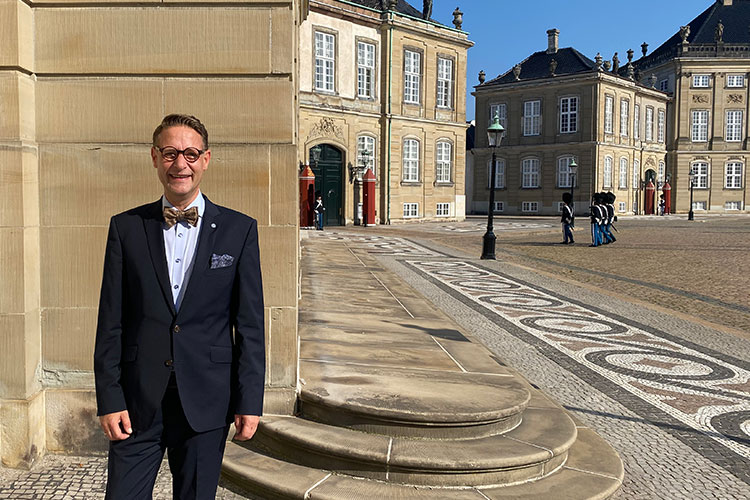
Join Our Specialist in the Treasury of Amalienborg Palace!
The "Fabergé Chamber" exhibition at Amalienborg Palace has the Danish Royal House’s art treasures from Russia on display. Meet our Chief Specialist in Russian art, Martin Hans Borg, inside the dark chamber, where he tells the story of the close ties between the Danish and Russian monarchies in the 19th century.
Part of the Royal Danish Collection is housed in Christian VIII's Palace at Amalienborg, and when you arrive at the museum, you are greeted by representatives from the Queen's Life Guard wearing traditional uniforms and bearskin caps. The entrance is found inside the large palace gate, and on the way to the "Fabergé Chamber," you are led through more than 150 years of history about the Danish Royal House.
The First Connection to Russia
The story of the Danish Royal House unfolds in a series of rooms, where the studies and living rooms of former regents have been recreated with their original belongings and furniture. One of these rooms is Christian IX's study. He became King of Denmark in 1863, and it is with him and his wife, Queen Louise, that the story of the Danish-Russian relations begins, says Martin Hans Borg:
After the defeat of Denmark in 1864 and the loss of Schleswig, Holstein and Lauenburg, the population's trust in the King declined, but the regent couple's popularity increased over the years – especially due to their six children, who were all married into various European royal houses. This matrimonial stratagem elevated the status of Denmark in the eyes of the people, but it was also a wise diplomatic move because it created strong relations across national borders. Christian IX and Queen Louise were even called "The In-laws of Europe", and their daughter Princess Dagmar married Alexander III of Russia in 1866 and became known as Empress Maria Feodorovna.
Royal Get-togethers and Christian IX’s Study
|
Every summer, the Danish royal couple Christian IX and Queen Louise invited their children, sons-in-law and grandchildren on holiday at Fredensborg Palace north of Copenhagen:
“It was one of the most festive events of the year in the Danish Royal House. When the royals arrived by ship at Toldboden or by train at the Central Station in Copenhagen, Danes showed up in droves and partook in welcoming guests from all over Europe. Both these gatherings and Christian IX's study show that the King was a family man and that the ties to the Russian court were very strong. Among countless books, trinkets and draperies in pure Victorian style, one finds, for example, a large photograph of Empress Maria Feodorovna and Alexander III with their children and a Russian equestrian sculpture made by the artist Vasily Yakovlevich Grachev. The same can be said of Queen Louise's living room, where several works of art from her daughter's new homeland are located, including a Russian table bell.” |

|
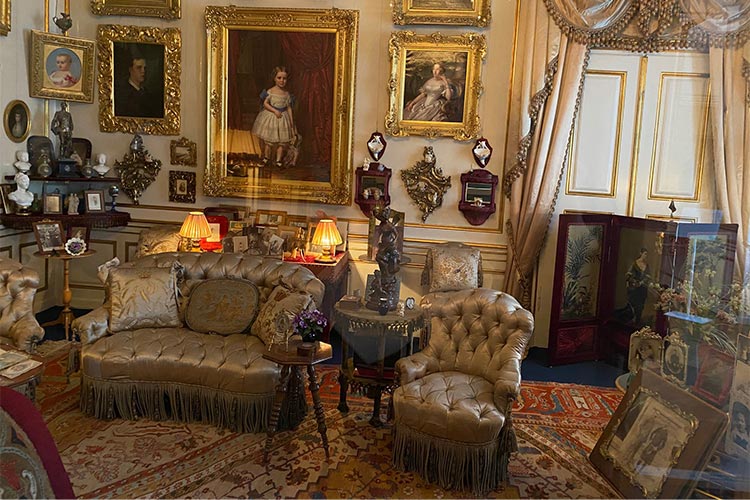
|
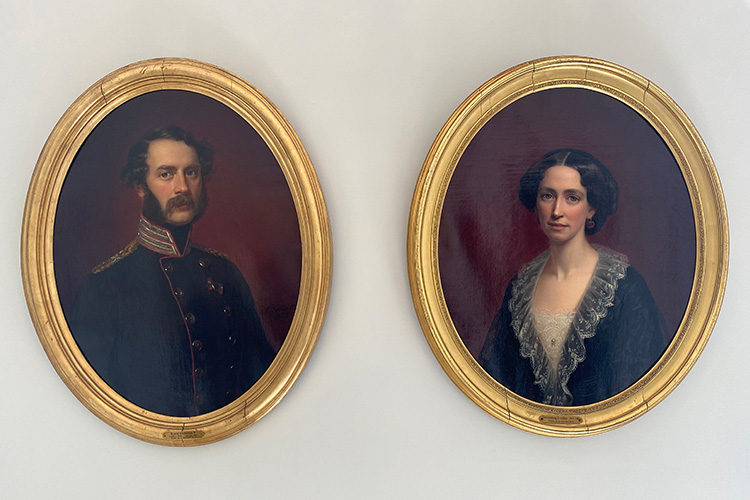
|
Sumptuous Gifts from the Russian Imperial Court
In the final room of the museum, one finds the "Fabergé Chamber" as the definitive proof of the once strong Danish-Russian connection. An exquisite selection of Russian jewellery from the period 1860-1917 is exhibited here, and the collection of items was primarily made by designers from Fabergé in Saint Petersburg. Stepping into the dark chamber is like stepping into another world, where only the art objects in the many display cases are brightly lit. Here, one quickly finds out that the renowned jewellers of Fabergé made much more than Easter eggs. At that time, there was a strong tradition in Russia of giving gifts at every possible occasion, and it was Empress Maria Feodorovna who ordered many of the exhibition's art objects from Fabergé and gave them to her relatives in the Danish Royal House.
“One of the most exceptional items is the giant silver-gilt champagne cooler. It is the largest item ever made by Fabergé. It was a gift to Christian IX and Queen Louise from their six children on the occasion of their golden anniversary in 1892. Its design emphasizes the relationship between Denmark and Russia – it has the shape of the traditional Russian drinking vessel known as the kovsh, and a war elephant on the handle can be seen as a reference to the Danish Elephant Order”.
Queen Alexandrine's Tiara and Coronation Brooch from Nikolai II
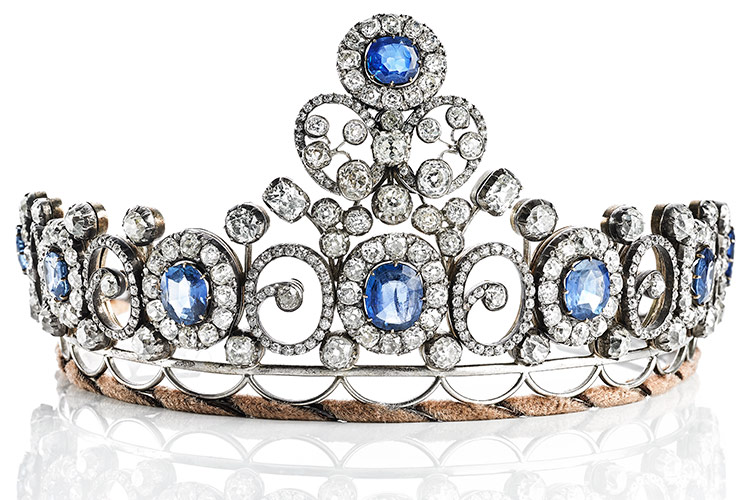
|
|
Today, Russian art objects are extremely expensive and in high demand, and when we at Bruun Rasmussen sell art and antiques from Russia twice a year, it often results in very high hammer prices - especially when it comes to items with royal and imperial provenance. "Among the magnificent objects in this chamber is "The Russian Sapphire Tiara," created by the jeweller C.E. Bolin. The tiara was a gift from Emperor Nikolai II and Empress Alexandra Feodorovna to Princess Alexandrine at her wedding in 1898. It was subsequently passed on to Hereditary Princess Caroline-Mathilde and from there to Count Christian of Rosenborg. In 2018, we had the tiara up for auction and sold it for a price of DKK 2 million. It was a great example of how when provenance and quality go hand in hand, there is great demand to be found on the auction market.” |
Coronation Brooch from Nikolai IIWith the tiara, the exhibition also sheds light on another branch of the Danish-Russian connections. Princess Alexandrine was the daughter of Grand Duchess Anastasia Mikhailovna of Russia, and when she married the later Christian X of Denmark in 1898, the two countries became even more closely linked. “From this branch of the Danish Royal House, you will also find a coronation brooch, which was created in connection with the coronation of Empress Maria Feodorovna's son Nikolai II in Moscow in 1896. He ordered 18 of these brooches from Fabergé, and August Holmström designed them as Russian mitre crowns. They were all given to Russian grand duchesses living both in and outside Russia. Today, only three of the brooches have survived, and the specimen here was owned by Grand Duchess Anastasia. It was inherited by her daughter Princess Alexandrine and later by Princess Elisabeth, who bequeathed it to the Amalienborg Museum.” |
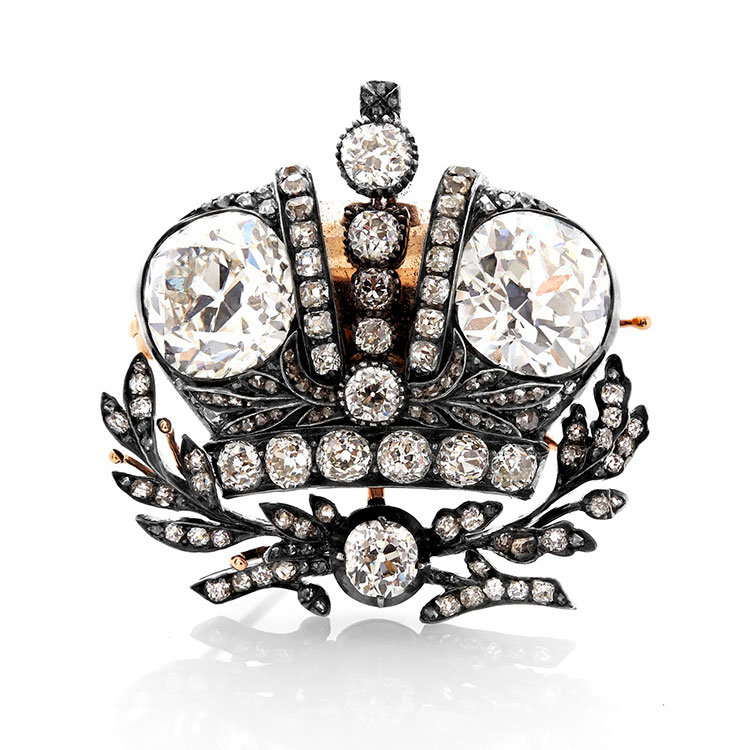
|
The Russian Art Tradition
The "Fabergé Chamber" provides an insight into how different the Russian art tradition is from the one we are used to in our part of Europe.
|
“Here you find enamels, decorative art, precious stones, frames, signets, cane handles, jewellery and peculiar everyday items in many different colours, shapes and sizes. They are all examples of how skilled and innovative Fabergé's designers were back then. The chamber stands as a symbol of the wealth of the Russian Imperial Family, and their penchant for surrounding themselves with luxury – even pastille boxes and table lighters were made at Fabergé. Although there are far more works of art in similar Russian treasuries in London and Saint Petersburg, the special thing about the Danish exhibition is that everything is of such exceptionally high quality. As a historian, I find myself continuously captivated by these lavish art objects because they testify to both Russia's and Denmark's strong history and royal connections.” |
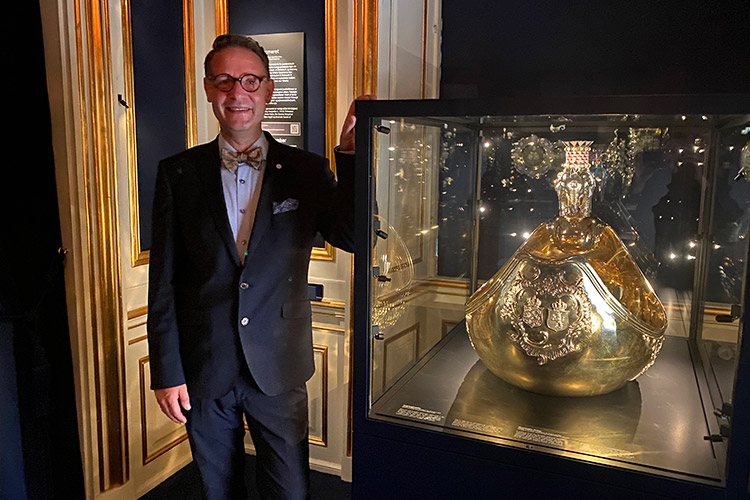
|
|
With these words, Martin Hans Borg ends his visit and recommends everyone to make their way to the Amalienborg Museum in Copenhagen. |
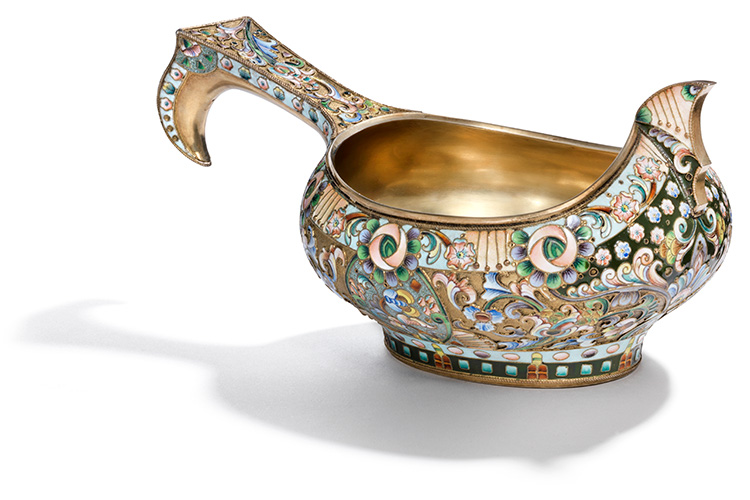
Sell at auction!
Deadline for consignments 12 October
For further information, please contact:
Martin Hans Borg: +45 8818 1128 · mhb@bruun-rasmussen.dk